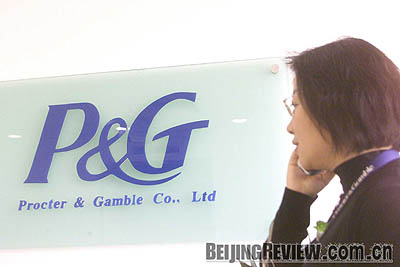|

The Procter & Gamble Co. (P&G) launched its Chinese employee stock ownership plan (ESOP) on April 1 after five years of preparation. The plan entitles its more than 7,000 employees in China to buy P&G stocks and share its growth benefits.
From April 1, P&G's Chinese employees can buy company stocks from overseas markets by deducting 1 percent-5 percent from their monthly salaries. They can participate in the incentive program on their own accord, said Yang Jianjun, a P&G China executive involved in the arrangement, as reported by the newspaper Economic Observer on April 4.
It was reported that P&G, the U.S. manufacturer of consumer goods for everyday use, is the first company in China approved by the state foreign currency watchdog to carry out such a plan. Yang said the core principle of this global plan was to encourage employees outside the United States to share the benefits from the development of the company.
Employee share incentive scheme have become commonplace at big companies. P&G launched the plan in the late 19th century and was among the first group of U.S. companies that introduced ESOP. P&G statistics show that $1 invested in P&G in December 1986 was worth $67.56 on April 18, 2008.
Until now, as part of P&G's global ESOP, 40 percent of its employees from 63 countries have taken advantage of the policy. More than half of the company's employees in Hong Kong and Taiwan have held P&G stocks.
P&G's headquarters in the United States hoped to include its employees in China into its global incentive program five years ago. As a result, P&G China submitted an application to China's State Administration of Foreign Exchange (SAFE). Approval for the scheme came at the end of last year after a five-year-long effort due to China's many restrictions on foreign exchange speculations and investments in overseas stock markets.
P&G obtained a quota of $4.74 million in 2007 from the Chinese Government for its employees to purchase its stocks overseas, according to the SAFE ratification. P&G (Guangzhou) Ltd. is required to apply to the Guangdong branch of SAFE for next year's annual quota. After a five-year saving period, employees participating in the plan must sell their stocks and transfer the after-tax money as well as the proceeds back to China.
"P&G's share incentive plan is similar to the qualified domestic institutional investor (QDII) scheme in terms of how it works in the eyes of the Chinese foreign exchange watchdog," said Yang. "That's why we got SAFE's nod."
P&G's employees subscribe to stocks usually before they get their monthly salaries, said Yang. They decide the percentage, fill the application form and confirm the purchase on P&G's intranet. The human resources department collects the money deducted from employees' salaries and asks the China headquarters in Guangzhou to transfer the money to the U.S. headquarters. The process is almost the same in other countries and regions unless local laws have special stipulations.
"Employees aren't allowed to buy or own P&G's stocks any more if they leave the company," said Yang. "But they can sell their stocks in hand when they quit."
P&G is one of the world's biggest manufacturers of consumer goods for everyday use. With 138,000 employees worldwide and factories and branches in more than 80 countries, it produces more than 300 brands which are sold to 160 countries and regions. The company has been in China for nearly 20 years and its Chinese market, yielding more than $2 billion in annual sales, has become its second largest regional market in the world.
The pool of Chinese employees has grown rapidly, and more and more Chinese have been promoted to management positions in P&G China. To date, Chinese employees account for more than 98 percent of the total member of workers in the company's great China region.
"Employees are the most valuable assets of P&G," said Yang who believes the implementation of the plan would help to stabilize its talent pool in China. "An important principle of the incentive scheme is to share with the employees the success of the company, and allow them to participate in the growing of the company and benefit from it." | 